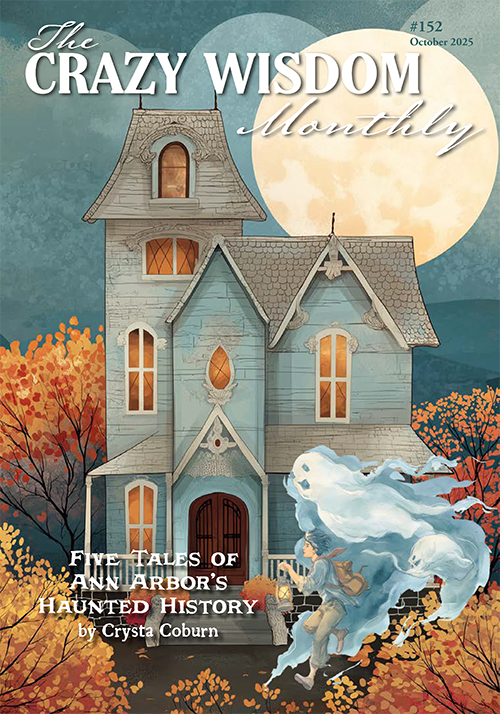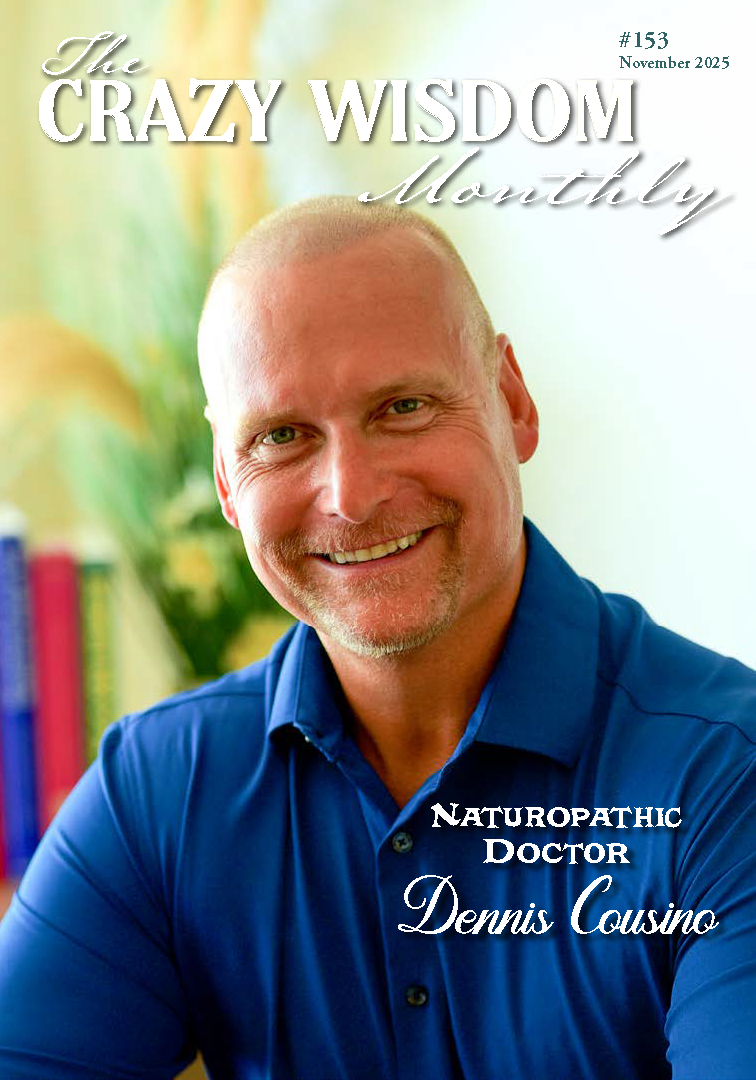Awareness helps us understand and neutralize situations, allowing them to feel less personal. Unconscious patterns like bullying, judgment, and anger become conscious as our awareness grows. As the saying goes, “hurt people hurt people.” When awareness grows, and we become conscious of our emotions, we are more able to transcend behaviors that cause us (or others) to be hurt
Corona Retreat
Solitary retreats are a familiar experience for me. I’ve been taking off into the woods to retreat all of my adult life. After I had cancer ten years ago, I scheduled these retreats as many as six times per year to support my healing process. Retreating alone has been an important piece of my self-care and a way to deepen into my meditation practice.
Self-love
It’s only mid-March and I’ve already noticed a shift in my outlook that has influenced how 2020 is going for me. I’m not sure what started it: An invitation by my art teacher Flora Aube to ditch typical new year resolutions in favor of self –love? An artwork with a message to replace acceptance with the ongoing efforts to become a better version of myself? Or simply, turning 50? The recognition of having lived half a century leads one to contemplate certain things.
Why Practice Mindfulness?
by Barbara Newell
When Laura Cowan interviewed me for her cover article in the current Crazy Wisdom Journal, we touched on the two main avenues of practice for cultivating mindfulness in everyday life. Ms. Cowan wrote candidly about the parent’s classic dilemma: wanting to enjoy the proven benefits of mindfulness in relating with herself, with her loved ones, and all the ups and downs we all encounter in life, yet feeling stretched too thin to add another item to the to-do list. The avenue of finding small ways to be more present right in the midst of what’s already happening throughout the day came naturally to the forefront of our interview.
The other avenue is the one commonly referred to as “formal practice.” It doesn’t have to mean sitting in the lotus position at an altar with incense burning (as lovely as any or all of these things can be). It simply means setting aside some minutes in which we don’t do anything else except reconnect, again and again, with our “home base” of mindful presence.
For many people, this home base is following our breathing; others find a different anchor works better for them. In it we give ourselves full permission to let go of our agendas. Every time we notice our mind has wandered off (as human minds are wont to do!), over and over again, we bring the mind back to this home base of spacious, kind presence. It seems so simple – which it is – and yet countless people have found it really makes a difference.
One well-known, busy mom I know made herself a deal one day many years ago now. She vowed that henceforth she would meditate every day – and - she gave herself what she calls the “back door” that it didn’t matter for how long. There were times, particularly when her son was quite young, when it was just taking a few conscious breaths and saying the briefest prayer at night, on the edge of her bed, before keeling over; yet her promise to herself made a real difference.
These two approaches to cultivating mindfulness very much support each other. When we take a few dedicated moments to really pause and reconnect with wakeful, caring presence to our own heart, it’s much easier throughout the day and week to take the micro-pause in a challenging moment - even a single, mindful breath - that gives us just enough room to check in with ourselves and respond to the situation instead of habitually reacting to it in a way we may regret later.
Similarly, when we do take short windows of opportunity to resource ourselves throughout an active day - how about just enjoying a few refreshing, conscious breaths when we’re at a stoplight, instead of looking down at our phone for the hundredth time? - there will be less accumulated restlessness when we do take those dedicated minutes to come back to the miracle of our living, breathing body, here in the present moment.
Recently I recalled a brief exchange that took place nearly 25 years ago, when I was quite new to meditation. I was just meeting a woman living with metastatic, stage 4 breast cancer. Within a couple minutes we somehow discovered that both of us were meditators. Suddenly her dark-brown eyes bored intently into mine, with a fierce gaze from which life’s trivialities clearly had been burned away. She got straight to the point: “When the mind is in the present moment... there is no fear.”
My mind came to a complete stop. It was beyond question this woman knew what she was talking about. I knew that I needed this practice.
I am grateful to her.
You can reach Barbara Newell at Grove Emotional Health Collaborative’s office on Main Street at www.groveemotionalhealth.com or by contacting her at barbara@groveemotionalhealth.com and (734) 224-3822 x113.
To learn more about Barbara, read Crazy Wisdom Kids in the Community—Mindfulness with Barbara Newell, Joy Aleccia, and Anique Pegeron from issue #73.
Related Content:
The World’s Worst Meditator
Very often when the subject of meditation comes up, people cock their heads, sigh, and wince with an air of self-judgment. They might say something along the lines of, “I know I NEED to start meditating,” or “I’m not good at meditating.” While there have been many studies on the benefits of meditation, many of us still find it challenging to develop a daily practice. We know it’s good for us and can make us more relaxed, kinder, and happier. So what gives?
What's in a Name?
I wanted to share this to hopefully bring some lightness to our struggles with what is foreign to us, hard to pronounce, or even hard to understand. We can get too caught up in getting things right, worrying we will offend, or thinking we are not respectful if we don’t do the extra effort it takes to get it right. Consider that what come easy and natural to you, even though it veers from the original, might actually add to someone’s memory space, and enrich their lives
Cretan Labyrinth
The last sentence of my last blog almost a year ago was: “Oh, the discoveries that await!,” referring to the permanent walking labyrinth I was hoping to create the coming spring. Boy, did that turn out to be prophetic! I did create the labyrinth, last spring, and have been walking it, if not daily, regularly. It is one of my proudest creations because I was so convinced initially that I couldn’t do it.
A Spiritual Path: Meditation and Beyond
By Nirmala Hanke
We all have a spiritual path. “Meditation is for everyone, eventually,” one of my spiritual teachers, Chetana Catherine Florida, used to say. Meditation is a practice of listening that helps us to move forward along our own particular spiritual path. You listen to the highest intelligence within, whether you call it God, your Higher Power, God/Goddess Consciousness, the Christ Light, the Buddha Nature, the Tao, whatever you wish to call it.
Forgiveness Is for You
Forgiveness is sometimes thought of as a nice thing to do for others, sort of like giving a birthday present or a Valentine’s Day card. Of course, it is a wonderful expression to offer to another human being, but the fact is that it will always be a largely superficial gesture unless based on self-forgiveness. In my life, I find that it is not something just nice to do; instead, it is as essential as breathing.
Faster Than a Speeding Bullet: Freight Trains and the Art of Meditation
By Lenny Bass
It’s 4:30 a.m., and I’m sitting in the hot tub in the back of our little home at the edge of Delhi Park. A sliver of moon slides shyly between fast moving clouds, and off in the distance, a family of coyotes are howling away. It is not unusual for me to be up at this hour of day; it has become a habit of mine ever since I lived at the Zen Buddhist Temple in Ann Arbor in my late 20s. Now I am 53, and I’ve become wedded to this hour as a kind of prime time for my sitting meditation. The family is gainfully asleep. The streets are barren and pin-drop silent. And there is a kind of vibrational hush that draws me in and allows me to listen deeply to the spaces between my rambling thoughts.
“Sometimes they are quick bursts, flashes in the pan, gone before the earth knows what hit it. Other times, they are like a long, thunderous ovation, squealing rails and the earth shuddering beneath a behemoth’s raucous stampede.”
But on this particular morning, I am drawn to something other. Off in the distance, barely detectable to the human ear, a faint whistle can be heard. We live just a few blocks from the railroad tracks, and I know instantly that a freight train is headed our way. During normal, “sane” hours, we’ve learned to tell time by the regularity of the whistles that pass by our home. But these are trains with schedules, Amtrak trains coming from or going to Chicago. In the “off” hours, however, a random conglomeration of freighters have free access to the rails. Their timing is unpredictable, but I know in an instance what’s coming, and the only question I have is, how large? Sometimes they are quick bursts, flashes in the pan, gone before the earth knows what hit it. Other times, they are like a long, thunderous ovation, squealing rails and the earth shuddering beneath a behemoth’s raucous stampede.
I sit back in the tub and wait for my answer. Finally, the magnificent rumble is upon me and it goes on and on like some kind of primordial tantrum. The thing is massive and I’m instantly awed by the way its magnificent vibrato hits me square in the solar plexus from more than three blocks away. What incredible power we have come to wield, I’m thinking to myself as it passes by. The momentum and density of our existence have a kind of trajectory that seems virtually unstoppable. I imagine how long it would take to bring the thing to a halt by applying the brakes. A mile? Two miles? More?
“It occurs to me that meditation practice is like this. It is just like trying to apply the brakes to a hundred car freight train in motion...with a tweezers no less!”
It occurs to me that meditation practice is like this. It is just like trying to apply the brakes to a hundred car freight train in motion...with a tweezers no less! How long would it take to stop a train of this magnitude with a pair of ordinary hand-held tweezers? This, I believe, is meditation...in a nut shell. At least in the beginning, I would say.
“When people first come to their meditation practice and sit for a while, often they are surprised to find out how hard it is to derail their thought processes.”
When people first come to their meditation practice and sit for a while, often they are surprised to find out how hard it is to derail their thought processes. No matter how hard they try, the thoughts just keep on coming. I must not be doing it right, they might
think to themselves. But we have to imagine ourselves just like this freight train. Each of us brings to our practice the incredible weight and volume of our entire life history from the moment we separated from the womb and began buying into the notion of ourselves as individual beings. The ego — this separated sense of self — invests incredible amounts of energy in discerning its likes and dislikes, its wants, needs, tastes, aversions, goals, dreams, fears...on and on; it builds itself like a freight train, car after car after car. It motors itself up mountains, through valleys, across flatlands, using any and all available raw material to add to the case of its undeniable existence. How intense an undertaking, then, to imagine slowing the thing down. Could it even be possible to stop the thing altogether!
“The ego — this separated sense of self — invests incredible amounts of energy in discerning its likes and dislikes, its wants, needs, tastes, aversions, goals, dreams, fears...on and on; it builds itself like a freight train, car after car after car.”
Having done this a while, I don’t think it is much of an exaggeration to suggest that, at first, our meditation practice can have the feel of “applying tweezers to a freight train”. But rather than being disheartened by this realization or giving up on the practice altogether, it is better if we simply gain the awareness of what we are actually up against. The weight of our momentum is an awesome force. It has been this way for so many years. What makes us think that the minute we decide to sit down and meditate, everything will simply fall away?
When we first come to practice, it may be all we can do to simply “watch the train cars passing by.” We pull up a lawn chair, so to speak, and sit at the edge of the tracks, and...O. M. G...what an awesome contraption! The thing won’t stop. I tell it to stop. But it doesn’t stop. So, now, maybe I’ll just count the cars as they pass on by. Two- thousand five-hundred and eighteen, two-thousand five-hundred and nineteen....where does it end, we may wonder.
“Little by little by little, sit after sit after sit we begin gaining an awareness of the space between the cars, that tiny blip of expansive fresh air between fast moving objects.”
This very realization is a wonderful beginning point. For, once we see what we’re up against, then we can begin working with “the tweezers,” as it were, to slow it all down. Little by little by little, sit after sit after sit, we begin gaining an awareness of the space between the cars, that tiny blip of expansive fresh air between fast moving objects. The cars were moving so fast in the beginning, we didn’t even know it was there! But now they’ve slowed down just enough that we see it...a view of the horizon that goes on and on, seemingly forever. And seeing it for the first time....wow, how amazing is that!
Suddenly we have great hope and great impetus to continue onward, for that space between the fast moving train cars seems to bring us such peace. We’d much rather live there than on a fast moving train!
Finally, the freight train has passed (the real one, that is...) and I come back to my breath while sitting alone in the tub. Next, it is to my mat and cushion for a half hour of sitting before the family arises. My own thoughts will keep coming, just like the train that went by...but I’ll also see those vast empty spaces as well, more and more as my years of practice continue.
May we all derail our inner freight trains...with tweezers, forceps, clamps, tongs, whatever we can find! And may we all awaken to those spaces between the cars!
Lenny Bass is a long time meditation practitioner with deep ties to the Zen Buddhist Temple of Ann Arbor. His essay "Swaying in the Sangha of Trees: The 'Tree'-Quel" appeared in the January through April issue. You can read the first installment here. Leave a comment for Lenny below or contact him at oneononemeditation@yahoo.com.
Won’t You Sway...Just A Little Bit Longer: A couple more thoughts from the tree talking man...
By Lenny Bass
In the two articles I wrote for the Crazy Wisdom Community Journal entitled “Swaying In The Sangha Of Trees” (the second one being “The Tree-quel”), one of the basic ideas I was hoping to convey through my conversation with the tree was the possibility, through meditation practice, of cultivating the ability to persevere through difficult situations, whatever they might be.
“When the storms come,” the tree told me, “we trees sway. In this swaying, the soil beneath us is loosened and our roots are allowed to grow.”
Human beings, of course, are very different than trees. When the storms come, trees have very little choice other than swaying. They cannot “get into their mobility carts,” as the tree liked to call it, and flee. Human beings, however, can do just that. They can get into their mobility carts and flee whatever storms come their way.
If you stop to think of it, the premise of this very country itself was built upon this simple formula. It is based upon a group of people — in this case Europeans — fleeing in their “mobility carts,” otherwise called boats. They fled the hardships imposed upon them by an uncompromising monarchy and sought to create a better situation for themselves elsewhere. Somehow, somewhere in this country’s DNA since the time of its inception, is the notion that the way to make things better is to get into a mobility cart and flee. There are umpteen bazillion versions of this, if we really look with any amount of depth and honesty.
“It begins with a perception: what ‘is’ is not good enough. What ‘is’ could be made better. What ‘is’ makes us suffer. What ‘is’ is unsatisfactory.”
It begins with a perception: what “is” is not good enough. What ‘“is” could be made better. What “is” makes us suffer. What “is” is unsatisfactory. And suddenly, we are off. In our mind’s eye, we have a strategy for improvement; a better education, a better job, a better marriage, a better house, a better climate, more sun, less snow, and on and on.
We create a plan — a life plan, if you will — and we are on a path to get there, wherever it is our mobility carts are taking us.
The true gift of a meditation practice in which we become adept at learning how to sway is that it shows us in no uncertain terms the fallacy of the formula. If we track the process from beginning to end, we see the very same progression of events manifesting time and again. At first, we are happy to have found a path through which life may be made better. We follow this path with all due diligence until we have achieved our goal. Suddenly, we have it...whatever “it” is. We have the better job, the better house, the better husband or wife, the better climate. And then...it is “honeymoon” time. We happily relish whatever it is we have accomplished to make our lives better. Everything is wonderful and new and exciting. Then, continuing to track it, it grows, over time, to become “common place.” The sparks wear off, the cracks start to show. The new boss is a jerk, the new wife has wrinkles. We’re sick of the sun and wish it would snow. The new house has that much more maintenance we hadn't counted on. And so...we’re back to square one. How can we make it “better”? What is our new strategy? Move back to the old climate? Get a another new job? Find a new country to call home?
On and on it goes....until finally, somehow, sometime, we catch on. Getting into our mobility carts just isn't working. The process is always the same. The outcome never lasts. We’re always, time after time after time, back where we started. Dissatisfaction.
“It is from this place that I believe ALL true meditation practice is born. And, it starts with a kind of commitment NOT to flee. To hang in. To persevere with whatever it is that is dissatisfying.”
It is from this place that I believe ALL true meditation practice is born. And, it starts with a kind of commitment NOT to flee. To hang in. To persevere with whatever it is that is dissatisfying. In sitting meditation for long hours, the mind does everything it can think of to try to get us to flee. It’s boring. Our knees are hurting. It is a waste of time just sitting here doing nothing. It is “unproductive.” It won’t make things better. On and on, the mind keeps sending us these thoughts hoping to get us into another round of the formula we know just doesn't work. Sometimes we acquiesce; it is a habit, after all, this perpetual fleeing we have learned to do. Learning to “sway” with our circumstance just isn't in our vernacular. It’s never been taught to us. It is counter intuitive to “do nothing” about a bad situation.
And yet, as we continue to sit with whatever our circumstance happens to be, a transformation begins to unfold and a whole new way of life starts revealing itself to us. The longer we hang in there, the more we see it. No circumstance in life will EVER make us happy, for it is in the very nature of a circumstance to always be the victim of impermanence. Everything is forever changing. Nothing lasts forever. We are simply on a wild goose chase if we think our lives can be made better through a ride on a mobility cart.
We awaken to the moment, whatever that moment may hold. We embrace the moment, with everything it has to offer, the goodness, the badness, whatever it happens to be. Our circumstance is just a circumstance. Whatever it is, whether we like it or dislike it, it will change. Suddenly, we are free of the impulse to flee whatever it is. We gain the capacity to simply work with it, deal with it, negotiate with it, dance with it. By doing so, the circumstance itself becomes more pliable, more receptive, more amiable and amendable. What we thought was so very awful transforms before our eyes. Likewise, that hefty pot of gold becomes “eh, so what?” That too will change.
This is the gift of learning how to sway that I think would make the world a “better” place to live in (there he goes again....I hear you say!) Okay, maybe better isn't the right word. There is a temporary happiness that comes from changing a circumstance in our lives. There is a permanent happiness that comes from going beyond circumstances and embracing the moment. There are a thousand strategies to be temporarily happy....but just one to find a way that lasts. May we all learn to sway....just a little bit longer!
Lenny Bass is a long time meditation practitioner with deep ties to the Zen Buddhist Temple of Ann Arbor. His essay "Swaying in the Sangha of Trees: The 'Tree'-Quel" appeared in the January through April issue. You can read the first installment here. Leave a comment for Lenny below or contact him at oneononemeditation@yahoo.com.
Related Content:
Let’s Talk About . . . Death
By David Lawson
Now that I have your attention, let me tell you what a wonderful practice it can be to acknowledge to yourself that you and everybody else in this world are going to die! You may say, “Well, of course, I already know that. Why is it necessary to dwell on such a morose topic?” But as it turns out, we don’t really act as if we know it, do we?
The Man Who Talks with Trees Expounds. . .
By Lenny Bass
For those of you have read my previous essays about the on-going conversation I’ve been having with a Spruce Tree stationed in upstate New York near the heart of the Allegheny Mountains, I am inclined to further elaborate on some of the matters that were touched upon during these — how shall we call them — “episodes” of intra-species lucidity (others might be more inclined to call them “anthropomorphized psychosis”...to which I have little defense...)








































































































































































































The westbound traffic on Interstate 94 is at a crawl this morning and I couldn’t be happier. It’s a Wednesday and brilliant sunshine glints in my rear view mirror.